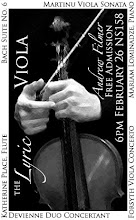This posting will address the various ways we can experiment with the bow. Knowing the basic rules of the game, metaphorically speaking, helps us to discover how we can make the practice session a self-teaching session as well.
In the diagram below, the black line indicates the basic path of the bow and numbers 1-6 indicate some of the ways we can experiment.
 1. Faster bow speed
1. Faster bow speedChanging bow speed provides us with different tone quality or timbre. Generally speaking, a faster bow can provide us with a more “airy” sound especially on the lower strings. But combined with more pressure from the right hand, it can also provide strong energetic sounds.
In many cases we will be surprised that moving the bow a little faster on the upper strings improves sound – because we sometimes forget to adjust from the slower bow speeds in the lower strings.
2. Slower bow speed
Slowing the bow generally makes the sound more compact or dense, even tight and intense. In a piano dynamic, and with an even, slow bow speed, a very calm quality can be achieved.
In playing we tend to gravitate to the medium or middle – and so, just as with the highest string, we can be surprised that improvements can be made with a slower bow on the lowest strings. This is especially so for the viola’s C string.
3. Bow towards the fingerboard
For many students, bowing towards the fingerboard happens by accident. So after repeated instructions by a teacher, it sometimes becomes an assumption that playing there is wrong (even the great violist William Primrose noted this in some of his students).
There are times when it can be done intentionally and done well. For the most part playing above the fingerboard can create a whispery, transparent quality. With a faster bow speed, it can even make the sound less clear, with a rougher edge, which can be useful depending on the music. However, we can also use this part of the string to play intense triple- and quadruple-stops more effectively, allowing us to get at least three notes all at once, without rolling the bow.
4. Bow towards the bridge
Bowing close to the bridge can create a rougher, aggresive quality. In many cases (again, especially for the viola), this is not only for the character of the music, but can help sound project. A tough lesson to learn is that what you hear is not always what the audience hears, just like how most of us find listening to recordings of our own voice strange.
5. Angling the bow away
This was a common way of ending music – it is basically an extension of No. 3 (bowing towards the fingerboard). But instead of having a section played further away, it is used to end certain notes with a diminuendo. Some pedagogues have rightly pointed out that it should not be the automatic way we end every note, but in the right context, the effect can be pleasant.
6. The bow stick
The big question is where the bow stick should point – upwards or forwards? In other words should the bow “stand” straight on the string or lean towards the fingerboard? There is no one right answer, and personally I like to consider keeping my options open and letting the sound be the guide. An upright bow can sometimes give a firm, confident tone, while a bow leaning forwards can give a warmer, fuller tone. Also, leaning the bow forwards gives us the option of letting less hair touch the string, letting us play quieter without relying only on bow speed, place on the string, or finger pressure.
In addition to these, there are other options also available. These deal directly with the bow.
7. The part of the bow
Connected to bowing and bow speed is checking that you are using the right part of the bow. Method books tend to split the bow into two (lower half and upper half) and three (upper, middle, lower) parts – while also noting the extremes (play at the tip or at the frog). Sometimes trying out “just below the middle” is also useful. Remember to make sure that you are not forced to play in an uncomfortable part of the bow because of a previous section – get to the part of the bow you want to play in.
8. Tightness of the bow
...is not always the same from one piece of music to another. Much depends on how on- or -off the string you wish to play, and how well the bow bounces. The rule of thumb is to have it just as tight as you need, and no tighter. But don’t end up playing lower in the bow than you would like just because your bow is too loose.






No comments:
Post a Comment